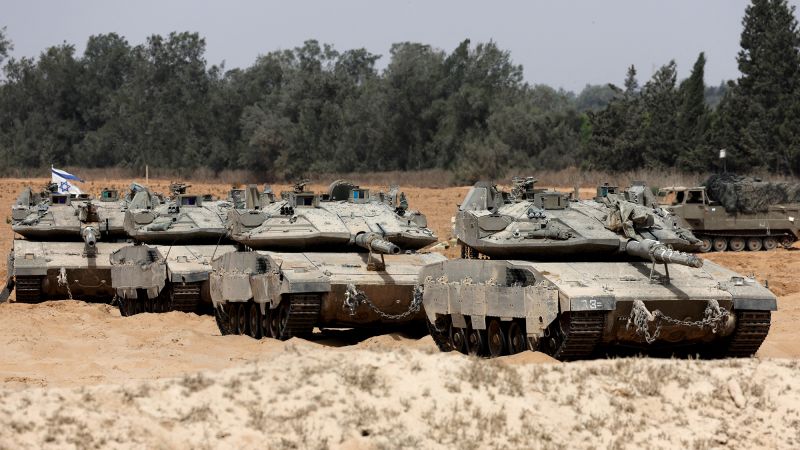
US President Donald Trump has expressed optimism that a ceasefire agreement in Gaza could be finalized as early as next week. This follows Hamas’s announcement of a “positive response” to a proposed 60-day truce with Israel. “We have to get it over with,” Trump stated on Friday. “We have to do something about Gaza.”
The potential agreement marks a significant development, as Israel and Hamas have historically held conflicting demands that negotiators have struggled to reconcile. However, with both parties now considering a revised proposal, an agreement appears more attainable than it has been for months.
Renewed Diplomatic Efforts
The latest push for a ceasefire follows a recent truce between Iran and Israel and reflects increased pressure from the United States, as well as a shift in Israel’s military objectives. Since the Israel-Iran ceasefire on June 24, mediators from Qatar and Egypt, alongside the US, have intensified their efforts to broker a new Gaza truce.
A spokesperson from Qatar’s foreign ministry noted that the Israel-Iran agreement has created “momentum” for the ongoing talks between Israel and Hamas. Meanwhile, Israeli Prime Minister Benjamin Netanyahu’s government faces mounting international criticism over the humanitarian crisis in Gaza, exacerbated by a blockade on aid deliveries imposed in March.
Hundreds of Palestinians in Gaza have been killed by Israeli strikes in recent days, with aid distribution efforts marred by violence.
Israel’s Strategic Shifts
Within Israel, pressure is mounting on Netanyahu from both domestic and international fronts. While his government is supported by far-right factions advocating for continued military action in Gaza, opposition leader Yair Lapid has offered to join the coalition government to facilitate a hostage deal. Polls indicate a majority of Israelis favor an agreement to secure the hostages’ release, even if it means ending the war.
Netanyahu has traditionally emphasized maximalist goals, including the disarmament of Gaza and the dismantling of Hamas’s military and governance capabilities. However, he recently prioritized the return of hostages over defeating Hamas, a shift welcomed by the families of those held captive.
“Firstly, to rescue the hostages,” Netanyahu stated. “Of course, we will also need to solve the Gaza issue, defeat Hamas, but I believe we will accomplish both missions.”
Hamas’s Position and Demands
On Friday, Hamas announced its readiness to engage in negotiations, emphasizing its three main demands: a permanent end to hostilities, humanitarian aid managed by the United Nations, and a retraction of Israeli forces to positions held before March 2 of this year. A senior Hamas official indicated the group’s willingness to return hostages swiftly, provided there is assurance against future conflict.
The hostages represent Hamas’s primary leverage in negotiations, and the group has resisted releasing them without a clear path to conflict resolution. The Trump administration’s earlier ceasefire proposal in May saw Hamas seeking US guarantees for ongoing negotiations and assurance against the resumption of fighting post-ceasefire.
The primary contention remains whether the ceasefire will be a temporary pause or a step towards a lasting peace.
The Proposed Ceasefire Deal
While the detailed terms of the proposal are still under wraps, it aims to reconcile some differences between Israel and Hamas. A source familiar with the negotiations revealed that the proposal includes a timeline for the release of 10 living Israeli hostages and 18 deceased ones over the 60-day period.
Under the agreement, Hamas would release eight living hostages on the first day of the truce, with Israel reciprocating by releasing an unspecified number of Palestinian prisoners and withdrawing from designated areas in northern Gaza. The deal also stipulates immediate negotiations for a permanent ceasefire once the initial truce takes effect.
Humanitarian aid, including United Nations support, would flow into Gaza at the ceasefire’s start, though the role of the US-backed Gaza Humanitarian Foundation remains uncertain.
Historical Context and Future Implications
The ongoing conflict between Israel and Hamas has seen limited ceasefires, with only nine weeks of peace over 21 months of war. The first ceasefire in November 2023 lasted merely a week, while a subsequent truce in January 2025 collapsed in March, reigniting hostilities.
The potential for a new ceasefire brings hope for a more sustained peace, but significant challenges remain. Proximity talks, likely in Doha or Cairo, will address unresolved issues, including the timeline and logistics of Israeli troop withdrawals during the ceasefire period.
As both sides prepare for further negotiations, the international community watches closely, hopeful that this ceasefire could pave the way for a more enduring resolution to the conflict.






